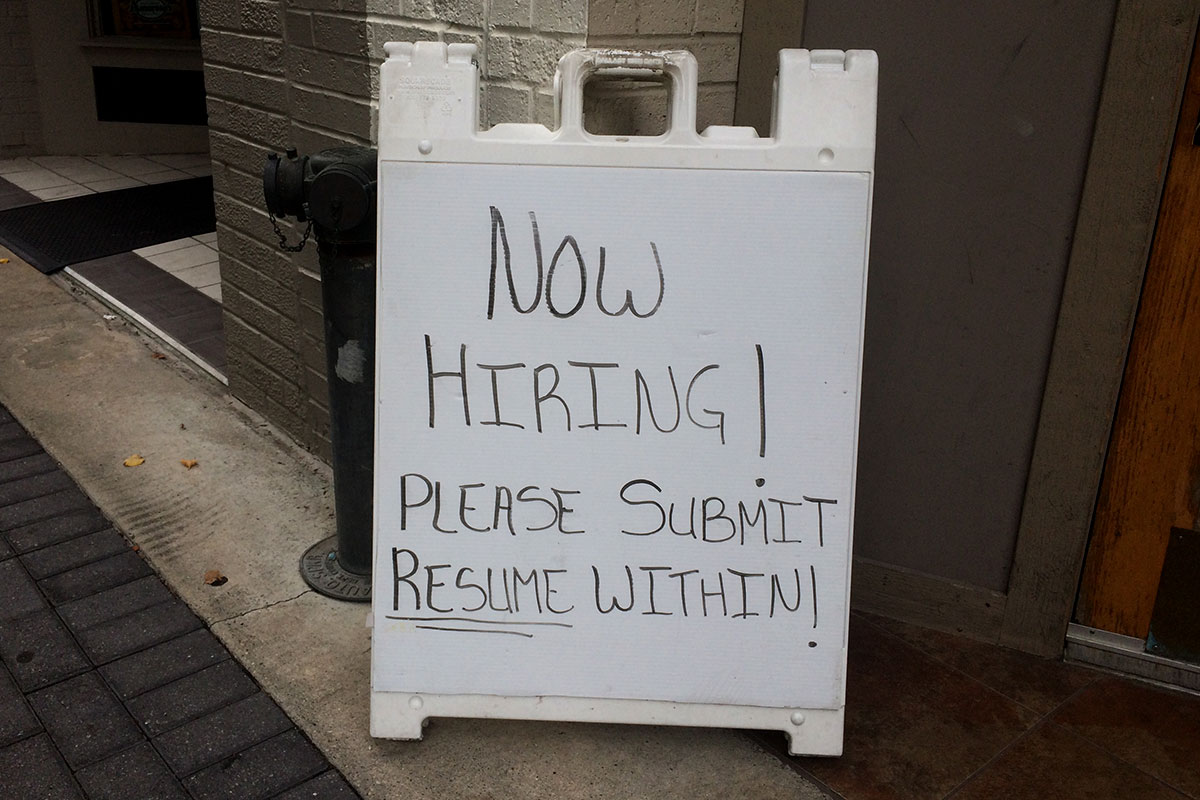If that question sounds redundant, here’s another way of asking it:
Do you market your employment like you market your products?
Are you working to build your customer and employee brands? Here are three reasons the answer should be “yes" (and that your recruitment marketing better not look like this).

Work is a product.
It’s not just an input. It’s an output—something we offer that someone else wants. A job is both a requirement and a reward. Providing valuable goods and services to others is rewarding in itself, but it’s also the means to every other good and service.
From a financial standpoint, it’s the transaction upon which all others depend. Instead of directly trading with others, we depend on money as the medium of exchange. If we’ve got money, we can buy anything, but how do we buy the money itself (assuming we’re NOT meeting someone with a briefcase of cash in a dark alley)?
We all know the answer: we exchange work for money. That makes a job a nifty appliance that converting our inputs of time, talent, and effort into money which we can then use to buy other people’s time, talent, and effort. (Don’t think about that too long. The circular nature of it might make you crazy.)
We all have to acquire these job appliances. There are lots on the market, and the cost and quality vary greatly. Some are disposable. Others come with a lifetime warranty. The question is what kinds are we offering? And are we marketing them effectively? Because here’s the reality:
Work products compete.
We shop for jobs just like we shop for stuff. We evaluate. Compare. Read reviews. Look for the best bargains and the styles that suit our tastes.
Because our jobs have to compete with others, we should market them. That starts by knowing their market positions—where they stand compared to the competition. Beyond knowing, we should deliberately choose (or change), then strengthen those market positions.
Take fast food as an easy example. An entry level position is comparable to a low-cost product, and when a business competes in that category, it has basically two options—be the cheapest or the best value. Either approach can work for attracting not just customers, but employees.
On one hand, a business could market itself as the cheapest: requiring little to no starting experience, providing an easy learning curve, offering flexible hours, and establishing a low-stress environment. In those respects, the job would cost an employee very little. (Though, we should all keep in mind that cheap products and cheap jobs have to be replaced often, and there’s a real cost for constant replacement.)
On the other hand, the business could seek to offer the best value: requiring more of an employee, but also investing more in them. Internships, tuition reimbursement, and on-the-job training are all good examples of this approach. The employee accepts a lower-level job now in exchange for for development and future opportunity. It’s a way of creating more value. More bang for the buck.
We face these sorts of marketing choices at every job level, and our decisions directly affect whether we attract the right people.
Your work product makes all your other work products.
If employment is a product, it’s the product because it makes all the rest. That should cause us to take it seriously. To prioritize it. Here are some questions we can ask to decide whether we’re doing that.
Are we doing product research and development?
Is the job itself current? How about the tools to do it? And the compensation for it? Jobs, like products, need to be evaluated and updated on a regular basis. Otherwise, you’re stuck trying to sell outdated models.
Are we promoting the product?
Does our company approach recruitment from a marketing and advertising angle? Do we expect employees to find us, or do we go after them with creative campaigns?
Are we upselling?
Are employees given real opportunities to develop and advance? Or should they expect to be doing the same jobs five years from now? Obviously, advancement requires an employee to take initiative, but are we encouraging it? Making it possible?
Are we winning and keeping people?
How many days does it take us to fill a job? What’s our cost per hire? And more importantly, what’s our turnover? And how do all these numbers compare to our industry and our internal expectations?
Hopefully, we can answer all those questions positively. If not, let’s take stock and consider (seriously) what needs to change. It’s admittedly a complex issue, and the answers might not be easy, but then, who ever said business was easy? It’s competitive, and that’s precisely why marketing our work is so critical.